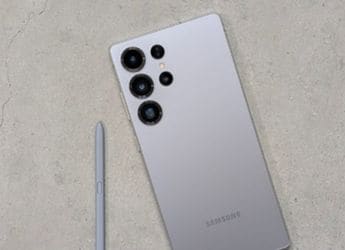- Home
- Transportation
- Transportation Features
- Lithium Ion Batteries in Electric Vehicles: A Fire Hazard?
Lithium-Ion Batteries in Electric Vehicles: A Fire Hazard?
Lithium-ion batteries can catch fire if they have been improperly manufactured or damaged.

Photo Credit: Reuters/ Wolfgang Rattay
A used Lithium-ion car battery is opened before its dismantling by an employee of recycling firm Accurec
General Motors has expanded the recall of its Chevrolet Bolt electric vehicles due to a risk of fire from the pouch-type lithium-ion battery cells made by South Korea's LG.
The recall, the second major one involving batteries made by LG Chem's battery unit LG Energy Solution (LGES) underscores the challenges facing battery firms in making a stable product to power electric cars.
How does a lithium-ion battery work?
Cells come in different shapes and sizes, but most have three key elements: Electrodes, electrolyte, and separator.
Electrodes store the lithium. The electrolyte carries the lithium ions between electrodes. The separator keeps the positive electrode from coming in contact with the negative electrode.
Energy, in the form of electricity, is discharged from the battery cell when lithium ions flow from the negative electrode, or anode, to the positive electrode, or cathode. When the cell is charging, those ions flow in the opposite direction, from cathode to anode.
Why do li-ion batteries pose a fire risk?
Lithium-ion batteries, whether they are used in cars or electronic devices, can catch fire if they have been improperly manufactured or damaged, or if the software that operates the battery is not designed correctly.
The major weakness of lithium-ion batteries in electric cars is the use of organic liquid electrolytes, which are volatile and flammable when operating at high temperatures. An external force such as a crash can also lead to chemical leakage.
"For EV fires, it's been always very difficult to pinpoint the exact root cause of the fire, because it is extremely difficult to 're-enact' the fire incident with the same conditions," said Kim Pil-soo, automotive engineering professor at Daelim University.
Also authorities, car makers and battery makers often do not disclose what the exact safety risk is.
What caused the fires on bolts and konas?
In February, South Korea's transport ministry said some defects had been found in some battery cells manufactured at the LGES China factory and used in Hyundai Motor's electric cars, including the Kona EV. Hyundai's recall cost about KRW 1 trillion (roughly Rs. 6,350 crores).
GM said the batteries supplied by LG for the Bolt EV and Bolt EUV may have two manufacturing defects – a torn anode tab and folded separator – present in the same battery cell, which increases the risk of fire.
For a factbox on major battery fires:
Are pouch-type batteries more vulnerable?
All three types of lithium-ion batteries currently used in electric cars - cylindrical, prismatic, and pouch-type - are fundamentally the same in functionality, but each has pros and cons.
Cylindrical and prismatic batteries are cased in hard materials. Pouch-types use sealed flexible foils and are protected by thin metal bags.
The technology used in cylindrical batteries is old and yields consistent results. These cells can withstand high internal pressure without deforming. They are also cheaper, making them ideal for mass production. But they are heavier and their shape stops cells from being packed as densely as with other battery forms. Tesla mostly uses cylindrical batteries, some supplied by LGES.
Prismatic batteries are considered safer and lighter than cylindrical cells and, because they are rectangular, can be more densely packed. They optimise space better than cylindrical cells, but are typically more expensive and have a shorter life cycle. They can also swell.
Compared with cylindrical and prismatic cells, pouch-type battery cells allow for lighter and thinner cell fabrication, and design flexibility for different capacities and space requirements for different vehicle models. However, they are vulnerable to swelling, and are more vulnerable in crashes, posing a greater fire risk.
GM and Hyundai Motor use pouch battery cells from LG Energy Solution (formerly LG Chem). Volkswagen said earlier this year it would shift away from pouch-style cells made by LG and SK Innovation to prismatic technology.
Are there other solutions?
Companies such as China's BYD Co produce EV battery cells that use lithium iron phosphate cathodes, which are less prone to catching fire, but are not able to store as much energy as standard cells that use nickel cobalt manganese cathodes.
Others including GM are testing different chemistries such as nickel-cobalt-manganese-aluminum (NCMA) technology, which use less cobalt, making the cells more stable and cheaper.
Chinese battery maker CATL unveiled last month a sodium-ion battery that does not contain lithium, cobalt or nickel.
A number of companies including Toyota Motor are also developing battery cells with solid-state electrolytes, which could minimise overheating issues and fire risks, but could take another three to five years to commercialise.
© Thomson Reuters 2021
Catch the latest from the Consumer Electronics Show on Gadgets 360, at our CES 2026 hub.
Related Stories
- Samsung Galaxy Unpacked 2025
- ChatGPT
- Redmi Note 14 Pro+
- iPhone 16
- Apple Vision Pro
- Oneplus 12
- OnePlus Nord CE 3 Lite 5G
- iPhone 13
- Xiaomi 14 Pro
- Oppo Find N3
- Tecno Spark Go (2023)
- Realme V30
- Best Phones Under 25000
- Samsung Galaxy S24 Series
- Cryptocurrency
- iQoo 12
- Samsung Galaxy S24 Ultra
- Giottus
- Samsung Galaxy Z Flip 5
- Apple 'Scary Fast'
- Housefull 5
- GoPro Hero 12 Black Review
- Invincible Season 2
- JioGlass
- HD Ready TV
- Laptop Under 50000
- Smartwatch Under 10000
- Latest Mobile Phones
- Compare Phones
- Tecno Spark Go 3
- iQOO Z11 Turbo
- OPPO A6c
- Samsung Galaxy A07 5G
- Vivo Y500i
- OnePlus Turbo 6V
- OnePlus Turbo 6
- Itel Zeno 20 Max
- Lenovo Yoga Slim 7x (2025)
- Lenovo Yoga Slim 7a
- Lenovo Idea Tab Plus
- Realme Pad 3
- Garmin Quatix 8 Pro
- NoiseFit Pro 6R
- Haier H5E Series
- Acerpure Nitro Z Series 100-inch QLED TV
- Asus ROG Ally
- Nintendo Switch Lite
- Haier 1.6 Ton 5 Star Inverter Split AC (HSU19G-MZAID5BN-INV)
- Haier 1.6 Ton 5 Star Inverter Split AC (HSU19G-MZAIM5BN-INV)







![[Sponsored] Haier C90 OLED TV | Dolby Vision IQ, 144Hz OLED and Google TV in Action](https://www.gadgets360.com/static/mobile/images/spacer.png)









